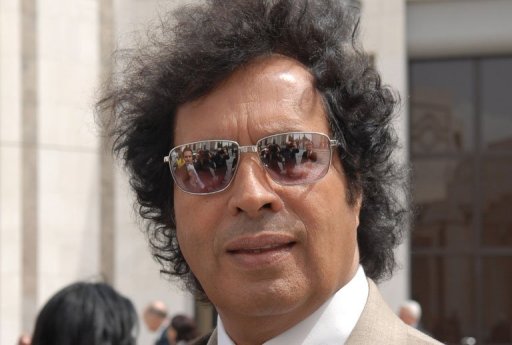Officially listed as a landmark, the Islamic Art Museum in Cairo has just undergone a complete overhaul; restoration of the building was a painstaking, complicated and exorbitant process.
The structure needed reinforcement; walls were re-encased, the old display cases had to be replaced with modern glass secure boxes; the antiquated security system — a major concern now in all museums of Cairo — had been traded for a state-of-the-art, round-the-clock security system covering not only every single piece and the entire of Bab Al-Khalq, but also the streets of Mohamad Ali street and Al-Mansara, directly connected to the main operation room in the Ministry of Interior.
The pieces on display were limited to 2,200 masterpieces, carefully selected to cover all Islamic eras. The administrative building was moved to an annex to give space to the 25 sleek new display halls. A soft opening of the museum has already taken place on Aug. 14. President Mubarak inaugurated it with all the media fanfare. It opens for the public on Sept. 30.
The idea of an Islamic art museum was the brainchild of Khedive Ismail, who, in 1869, pondered collecting all the Islamic artifacts — civil, military and religious — found in the Islamic buildings to protect them for posterity. Dar Al-Athar Al-Arabia (House of Arab Artifacts) saw the light in 1880 in a miniscule museum situated in the atrium of Al-Hakim Bi-Amrillah Mosque.
At the behest of Hertz Pasha, Khedive Abbass started the construction of the Bab Al-Khalq building in 1899 to be completed on Dec. 28, 1903. The collection of the museum, at the time, was comprised of a mere 7,000 wooden, glass, textile and ceramic artifacts. The collection then ballooned to a whopping 950,000, drawn from excavations in Al-Fustat and Dorronka in Assuit, gifts from Prince Kamal Al-Din Hussayn, King Fouad and King Farouq and the purchase of private collections such as Artin Pasha’s metallurgy and Ali Pasha Ibrahim’s priceless carpet collection.
The Islamic Art Museum is second to none in terms of size and value, followed by the Berlin Museum that contains 20,000 pieces, the British, Victoria and Albert Museums and the Ashmolian. Though, the collection includes tiny and fragile pieces unfit for exhibition, still they are vital for academic research and studies. In addition, the immense collection helps the museum to renew its exhibits regularly and allows it to participate in international exhibitions.
In 1952, Dr Zaki Hassan changed the name of the museum to the Islamic Art Museum. The collection comprehensively covered all Islamic eras from the first Hijri year (7th A.D.) to 18 Century A.D, representing the entire Islamic civilization and art from Samarkand and China in the East to the Arab Maghrib and Andalusia in the West.
Furthermore, the latest renovation, since there was a small scale one in 1983, does not only cover the building and exhibits but it also comprises a library with an exhaustive collection of books on Islamic Art on the second floor, a conference hall, a lecture room, a restoration workshop and a workshop for school children. In the latter room, kids receive simplified information about Islamic history and civilization before heading to an introductory session about Islamic art using plasticine and modeling clay.
This promethean feat was left in the capable hands of General Director of the Museum and Chief Expert of Textiles Mohamed Abbass. Seven years later, under a grueling working schedule, he is smiling fondly at the museum he knows inside out. He has 35 years of experience under his belt, a passion for Islamic art and textile and an unparalleled knowledge of Islamic civilization and art that sent him to the museums of Japan, Vienna, USA and United Kingdom to mention just a few.
Abbass is a published author of a tome on Islamic textiles that was published in Switzerland in German and translated into many other languages. Abbass is no stranger to extraordinary achievements. In the midst of the hustle and bustle of the renovation of the museum, he managed to write a complete chapter about Mamluke Art and compile a foreword for a new book about discovering Islamic art around the Mediterranean and pen the book about the reopening of the museum and Islamic art. He was quick to underline the fact that during the seven years of restoration, scientific and cultural work was ongoing and national and international cooperation with other museums never ceased.
Asked about his favorite part in the museum, he pointed out Hall Number 25 showcasing the Islamic Medical rare manuscripts and equipment. But the masterpieces that are close to his heart are the ewer of Marawan Bin Mohamad dating back to early Islamic age; the quaint chair of Al-Nassir Mohammad Bin Qalawoun dating to the late Umayyad age and early Abassid; and the skull cap of Samuel Bin Morcos —said to be oldest piece of Islamic textile and a proof that the Islamic conquerors were tolerant enough to allow the Egyptian Copts to weave their own skull caps.
And last but not least, the gold and silver Key of the Holy Ka’aba, which in addition to its embroidered cover, was annually sent as a gift from the people of Egypt to Saudi Arabia till the practice was abruptly stopped under President Gamal Abdel- Nasser’s rule.
Š Θ
Θ
#

#
#

#

